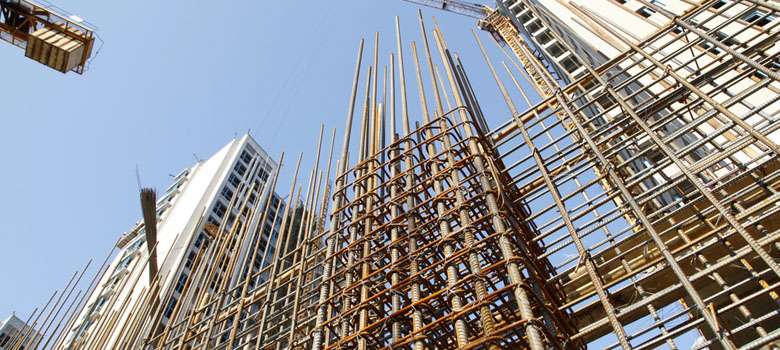Grant supports UTSA professor's research on stronger rebar

Wassim Ghannoum, associate professor of civil and environmental engineering at The University of Texas at San Antonio (UTSA), has received a $248,083 grant to support his top-tier research on the performance of an innovative new kind of high-strength reinforcing bars, commonly known as rebar.
In Texas, more than 80% of bridges are made from concrete, and no concrete structure can sustain itself without the support of a rebar cage.
"The bulk of all construction in the world is concrete-based," Ghannoum said. "Concrete is very strong in compression, but very weak in tension. You can easily just crack it. The steel rebar takes the tension loads."
Rebar in use today first became common in the 1940s, the most widely used type had a tensile strength, or ksi, of 40. In the 1960s, American construction moved onto 60 ksi bars, which have been the standard ever since. Now, Ghannoum is testing up to 100 ksi rebar to see if it's fit to become the new standard.
"We're going to hone in on their exact properties," he said. "Above all, we want to know what their exact strength is, as well as their ability to resist breakage and how long they can last."
The sheer amount of steel currently used in concrete structures can be staggering, and new, stronger rebar could cut out a third of the cost of steel in construction projects.
"Steel is always one of the most expensive parts of building any structure," Ghannoum said. "It has to be fabricated, erected and transported."
He also noted that in Texas, where a large portion of the rebar used in U.S. construction projects is forged, switching to a stronger steel could have positive environmental effects. Since sturdier rebar means less of it will be needed in construction, the energy saved could be considerable.
Ghannoum's grant comes from a consortium of construction-oriented agencies, namely the Charles Pankow Foundation, the Concrete Reinforcing Steel Institute and the American Concrete Institute.
He is set to begin his two-year project this fall, with a small group of UTSA graduate students to aid him. He's working with the five largest steel mills in the U.S. to establish specifications for the use of 80 and 100-grade bars, which will entail a good deal of testing. A machine to help simulate a host of conditions, including earthquakes, will soon be on the way to Ghannoum's laboratory.
"The last time we changed grades was five decades ago," he said. "If the new bars perform well, this is what will be holding up our buildings and bridges for the next 50 years."
Provided by University of Texas at San Antonio